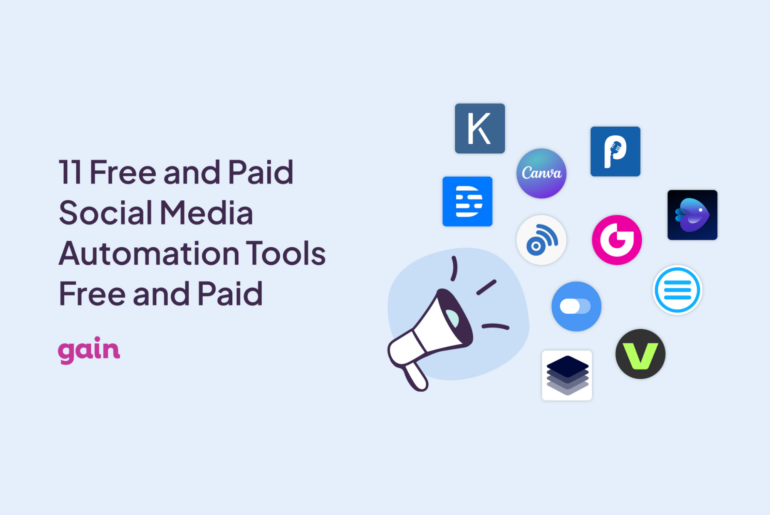Where there is demand, there is opportunity. From presidential debates to professional sporting events, the live streaming experience is definitely in high demand. Audiences are finding live video much more appealing as well. In fact,
80% would rather watch live video from a brand than read a blog, and
82% prefer live video from a brand to social posts.
Periscope and Snapchat has paved the way for live video, and other social media platforms are following closely behind. Facebook, Instagram, and Twitter have all developed their own live video streaming capabilities as well.
However, tapping into this “live” marketing gold mine presents its challenges for marketing teams, or agencies, that create content for a wide-range of brands. Here’s a look at a few of the challenges that producing live content presents, and the ways brand marketers can overcome them.
#1: Developing a clear strategy

The most important thing to remember about live content is that its primary focus shouldn’t be about the brand or its services. The focus of live content should be about establishing an authentic connection with your audience. Instead of viewing live video as a way to present information about a product or service in a new format, marketers should consider it as a way to share a story about a product or service and how it adds value to a brand’s audience.
As you begin incorporating live content into your marketing strategy, think about the key message and information you want your brand to convey, and evaluate whether or not you can achieve that goal with the help of live content.
 MarketingLand
MarketingLand provides these tips for outlining and implementing a live content strategy:
- Each platform has a slightly different audience, so determine the type of content you’ll create based on what feels the most native for that channel.
- Each platform has its own best practices, so be flexible. For example, Snapchat is all about quick, organic, and unproduced content while Facebook Live is better for longer form content that can be saved and replayed later.
- It’s not necessary to cover the same event on every channel. As with any social media platform, give your audience a reason to follow you in multiple places by creating a variety of content suited for each platform.
- Evaluate if live content can be incorporated into your existing social channels. Make updates to your social strategy as appropriate so you can be sure you’re making the most of the latest video tools and trends.
#2 Redefining your marketing team’s roles

Because creating live content is so multi-faceted, marketing teams need to possess a variety of technical and creative skills in order to be successful. Over the past few years, we’ve seen more and more marketing teams bring in video production talent to scale their video content production efforts. External video production agencies have long been used for larger scale projects that might be uploaded to a company website or YouTube channel.
However, as live content requires marketing teams to produce content more frequently on the fly, hiring in-house talent is becoming a better alternative to meet growing audience expectations for quick, and more frequent video content.
If you’re thinking about incorporating live content into your marketing strategy, your team will need to think about how to redefine your roles to take on each step of the live content process – from brainstorming and writing to producing and broadcasting the videos.
Especially if your team is creating live content across multiple channels, it’s crucial to assign specific roles, such as who will be the writer or host of the content, for each channel. This will help your team be sure that you’re not short-staffed and can scale your efforts if your videos prove to be popular and are resonating with your audience.
#3 Avoiding live ‘fails’
There are plenty of ways that a live stream can go awry. From technical difficulties to slips of the tongue, the unfortunate truth is that the very nature of live-streaming means marketers won’t have as much control over what’s being broadcast and how their brands are being associated with it.
BuzzFeed landed perhaps the biggest Facebook Live interview in history, nabbing a sit-down with President Barack Obama. Unfortunately, less than two minutes into the live broadcast, the feed faced technical difficulties and over 35,000 Facebook viewers were left with nothing to see. This was probably the smallest crowd the president has ever addressed, and a good example of the challenges the live-stream format presents.
To help your brand avoid a live stream fail, it’s important to control as much of the event as you can. If you’re hosting a live Q&A, for example, opening the Q&A up to any question can, unfortunately, attract trolls and be a recipe for disaster. Facebook users comment
10 times more on live videos than they do on regular videos, so it’s wise to pick a specific theme, to help keep the video cohesive and on track, and consider opening up the comments or feedback after a broadcast ends so you can audit incoming responses.
Other ways to optimize your live stream include selecting a spot that you know has a strong broadband connection and minimizing as much background and ambient noise as you can. You want to be sure your audience will see and hear you without any unnecessary distractions.
#4 Getting live content approved

As with most social media content, there needs to be an approval process in place to ensure that the content you’re publishing is in line with brand goals. But because of the instantaneous nature of live content, how can marketers get their clients to approve a live video campaign?
One way is to create a one-page outline that includes and explains the following components of your live video campaign to your client:
- Audience — Who you will be speaking to in your video.
- Purpose — What you are trying to do with the live stream. If you plan to do an interview, you can include all of the questions you plan to ask. (Defining this ahead of time is also a great way to eliminate awkward silences and excess chatter.)
- Context — Where will your broadcast take place and in what format – will it be a Q&A, sit-down interview, behind-the-scenes shots, etc.
- Metadata — Include the actual keywords, video title and description you’ll use to describe your stream.
- Rules — Outline what can you legally do in your video, what technical restrictions you have, etc.
An approval process is still necessary with live content to ensure your client is always in the know and happy with the content you’re creating.
#5 Having a follow-up plan
After you create a piece of live content, it’s important to have a plan in place for compiling results and measuring success. Measuring if goals were achieved is important because not every brand will find live content beneficial. It may require a lot of testing and measuring before you find the right format of live content that your audience responds to.
Nearly every social media platform is making a big push into live video, and there are plenty of reasons to be excited about it. Offering live content is a highly engaging way to build strong relationships with your followers, and ultimately, keep them coming back for more. Overall, we’re seeing the benefits of live video easily outweighing the challenges, but that doesn’t mean marketers can’t use these best practices to hone their skills and continuously improve their live content marketing efforts.
This post was originally published on Social Media Today.
 The most important thing to remember about live content is that its primary focus shouldn’t be about the brand or its services. The focus of live content should be about establishing an authentic connection with your audience. Instead of viewing live video as a way to present information about a product or service in a new format, marketers should consider it as a way to share a story about a product or service and how it adds value to a brand’s audience.
As you begin incorporating live content into your marketing strategy, think about the key message and information you want your brand to convey, and evaluate whether or not you can achieve that goal with the help of live content.
The most important thing to remember about live content is that its primary focus shouldn’t be about the brand or its services. The focus of live content should be about establishing an authentic connection with your audience. Instead of viewing live video as a way to present information about a product or service in a new format, marketers should consider it as a way to share a story about a product or service and how it adds value to a brand’s audience.
As you begin incorporating live content into your marketing strategy, think about the key message and information you want your brand to convey, and evaluate whether or not you can achieve that goal with the help of live content. MarketingLand provides these tips for outlining and implementing a live content strategy:
MarketingLand provides these tips for outlining and implementing a live content strategy:
 Because creating live content is so multi-faceted, marketing teams need to possess a variety of technical and creative skills in order to be successful. Over the past few years, we’ve seen more and more marketing teams bring in video production talent to scale their video content production efforts. External video production agencies have long been used for larger scale projects that might be uploaded to a company website or YouTube channel.
However, as live content requires marketing teams to produce content more frequently on the fly, hiring in-house talent is becoming a better alternative to meet growing audience expectations for quick, and more frequent video content.
If you’re thinking about incorporating live content into your marketing strategy, your team will need to think about how to redefine your roles to take on each step of the live content process – from brainstorming and writing to producing and broadcasting the videos.
Especially if your team is creating live content across multiple channels, it’s crucial to assign specific roles, such as who will be the writer or host of the content, for each channel. This will help your team be sure that you’re not short-staffed and can scale your efforts if your videos prove to be popular and are resonating with your audience.
Because creating live content is so multi-faceted, marketing teams need to possess a variety of technical and creative skills in order to be successful. Over the past few years, we’ve seen more and more marketing teams bring in video production talent to scale their video content production efforts. External video production agencies have long been used for larger scale projects that might be uploaded to a company website or YouTube channel.
However, as live content requires marketing teams to produce content more frequently on the fly, hiring in-house talent is becoming a better alternative to meet growing audience expectations for quick, and more frequent video content.
If you’re thinking about incorporating live content into your marketing strategy, your team will need to think about how to redefine your roles to take on each step of the live content process – from brainstorming and writing to producing and broadcasting the videos.
Especially if your team is creating live content across multiple channels, it’s crucial to assign specific roles, such as who will be the writer or host of the content, for each channel. This will help your team be sure that you’re not short-staffed and can scale your efforts if your videos prove to be popular and are resonating with your audience.
 As with most social media content, there needs to be an approval process in place to ensure that the content you’re publishing is in line with brand goals. But because of the instantaneous nature of live content, how can marketers get their clients to approve a live video campaign?
One way is to create a one-page outline that includes and explains the following components of your live video campaign to your client:
As with most social media content, there needs to be an approval process in place to ensure that the content you’re publishing is in line with brand goals. But because of the instantaneous nature of live content, how can marketers get their clients to approve a live video campaign?
One way is to create a one-page outline that includes and explains the following components of your live video campaign to your client:






